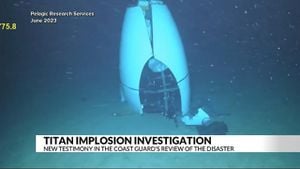Microplastics have become a central concern in the global conversation on environmental sustainability. What makes microplastics particularly troubling is their small size, which allows them to permeate almost all environments—from the deepest oceans to the peaks of mountains, and even into our own bodies. The journey of understanding, regulating, and mitigating the impact of microplastics is as complex as the plastic lifecycle itself.
Microplastics are defined as plastic particles smaller than 5 millimeters. These tiny fragments originate from a variety of sources, such as the breakdown of larger plastic debris or the industrial production of microbeads used in cosmetics. What’s striking is their ubiquity. Microplastics have been detected in virtually every corner of the globe, posing potential risks to both the environment and human health.
Recent scientific discussions and regulatory efforts are focusing more on these tiny particles. A standout piece is the paper by Denise M. Mitrano and Wendel Wohlleben, which highlights the necessity of precise regulations to incentivize both innovation and environmental safety in the context of microplastics.
Historically, plastic production has soared from its invention in the early 20th century, with mass production ramping up in the 1940s. The reasons are clear: plastic materials are lightweight, durable, and corrosion-resistant. These properties have made plastic indispensable in countless applications, from packaging and construction to healthcare and electronics.
However, these same properties also make plastic a persistent pollutant. When plastic waste is not properly managed, it can fragment into smaller particles, becoming microplastics. This fragmentation happens through environmental exposure such as UV radiation, mechanical abrasion, and chemical degradation. A well-known example of environmental microplastic generation is the abrasion of car tires on roads, which releases tiny particles into the atmosphere.
Understanding the lifecycle of plastic—from production and usage to disposal or recycling—is crucial in tackling the microplastic problem. Solutions often revolve around improving waste management and promoting a circular economy, where materials are reused and recycled as much as possible. This approach minimizes waste and reduces the production of new plastic materials.
In their paper, Mitrano and Wohlleben argue that regulations must be enforceable and focused, targeting specific uses of microplastics that can more effectively stimulate innovation and environmental safety.
For instance, while microplastic beads in cosmetics have been banned in several countries, other primary microplastics, such as those used in agriculture or industrial applications, still pose significant challenges.
The diversity of microplastics complicates risk assessment. For example, different types of plastic have varying impacts based on their chemical composition and the environmental context. Additives in plastics, which are used to give desired properties like UV resistance or flexibility, can leach out and potentially cause harm to wildlife and humans.
Evaluating microplastic pollution also calls for a comprehensive understanding of their sources, mobility, and interactions within different ecosystems. Groundbreaking studies have shown that microplastics are not just pollutants but can also act as carriers for other harmful substances, making them even more of a threat to ecological and human health.
So, how do we mitigate the risks associated with microplastics? One significant step involves improving waste management practices globally. Proper collection, recycling, and disposal methods can prevent the majority of macroplastics from breaking down into microplastics. For example, enhanced road sweeping and water filtration systems can capture and reduce the amount of tire wear particles entering waterways.
But waste management alone isn’t enough. There’s a strong push for innovation in developing biodegradable plastics and 'green chemistry' solutions. These innovations aim to provide the functionality of traditional plastics without the persistence in the environment. However, it’s crucial to ensure that biodegradable plastics are designed for their intended use conditions; otherwise, they may not degrade as expected, particularly in marine environments.
Another layer of complexity is added by socio-economic factors. Regulations and innovations often stem from high-income regions such as Europe and North America, where environmental norms are more stringently applied. However, this approach does not always translate well globally due to differing economic capabilities and priorities.
The role of media and public perception is also pivotal in shaping regulatory landscapes. Media coverage can drastically influence public opinion and, consequently, policy decisions. However, this often leads to oversimplification of scientific complexities and can result in misguided efforts that don’t address the root causes of plastic pollution. Advocacy and education are therefore critical in making informed decisions both at the consumer and policy levels.
Looking forward, the paper by Mitrano and Wohlleben suggests that the regulation of microplastics should not be merely punitive but should also foster innovation and sustainable practices. For example, regulations could be designed to incentivize industries to develop new materials and methods for reducing microplastic pollution without sacrificing economic viability.
Future research is also essential in advancing our understanding of microplastics. There are significant knowledge gaps, particularly concerning the health risks posed by microplastics—both ingested through food and water and inhaled from the air. Long-term studies are needed to ascertain the full impact of these particles on human health and to develop strategies to mitigate their presence in our environment.
In conclusion, while microplastics represent a daunting challenge in our quest for environmental sustainability, they also provide an opportunity to innovate and refine our regulatory and industrial practices. As Mitrano and Wohlleben aptly put it, “Regulation should be enforceable and focused, and most importantly linked to hazards. Then the replacement of critical microplastics can become an example of sustainable development and strict environmental regulations can stimulate innovation of new, more competitive and environmentally conscious materials”.
Addressing microplastic pollution requires a multifaceted approach that combines rigorous scientific research, precise and enforceable regulations, innovative industrial practices, and comprehensive public education. By embracing this complexity, we can navigate the path towards a cleaner, more sustainable future.



